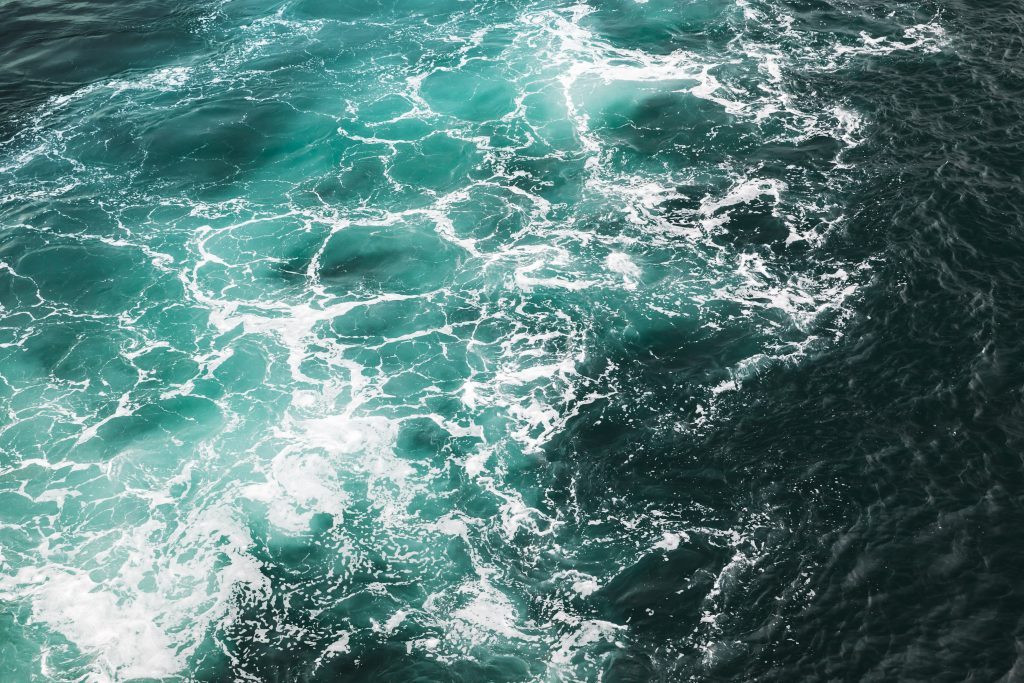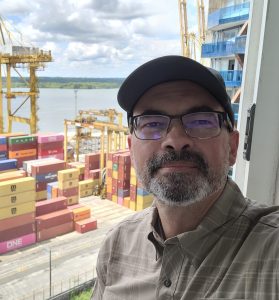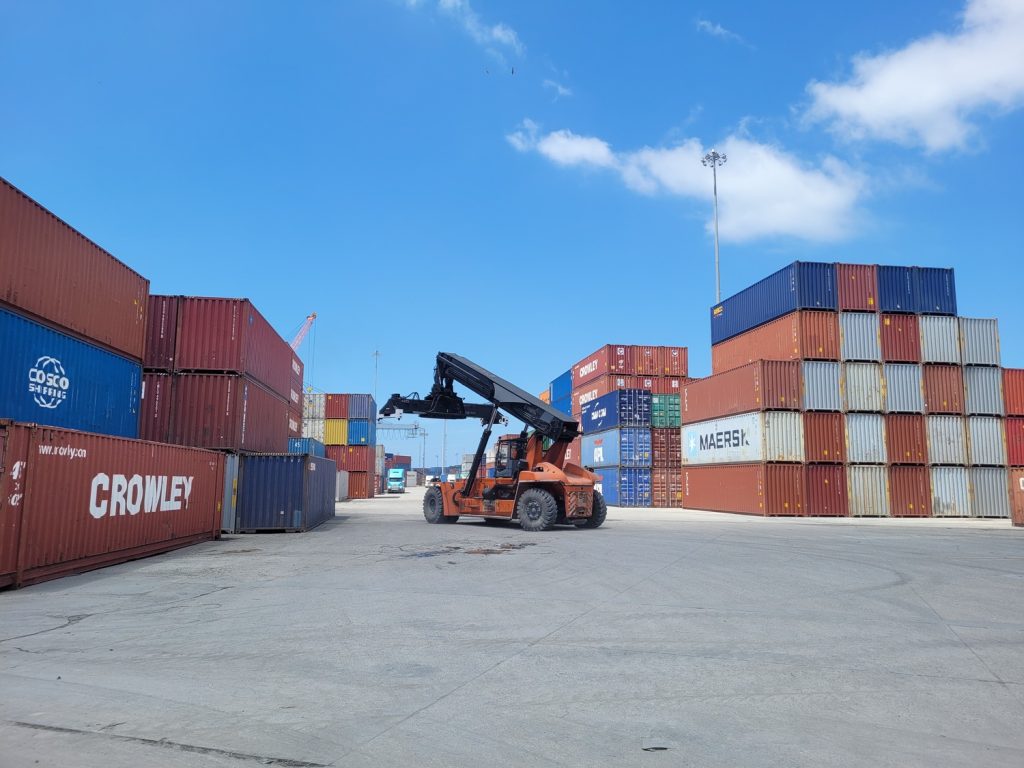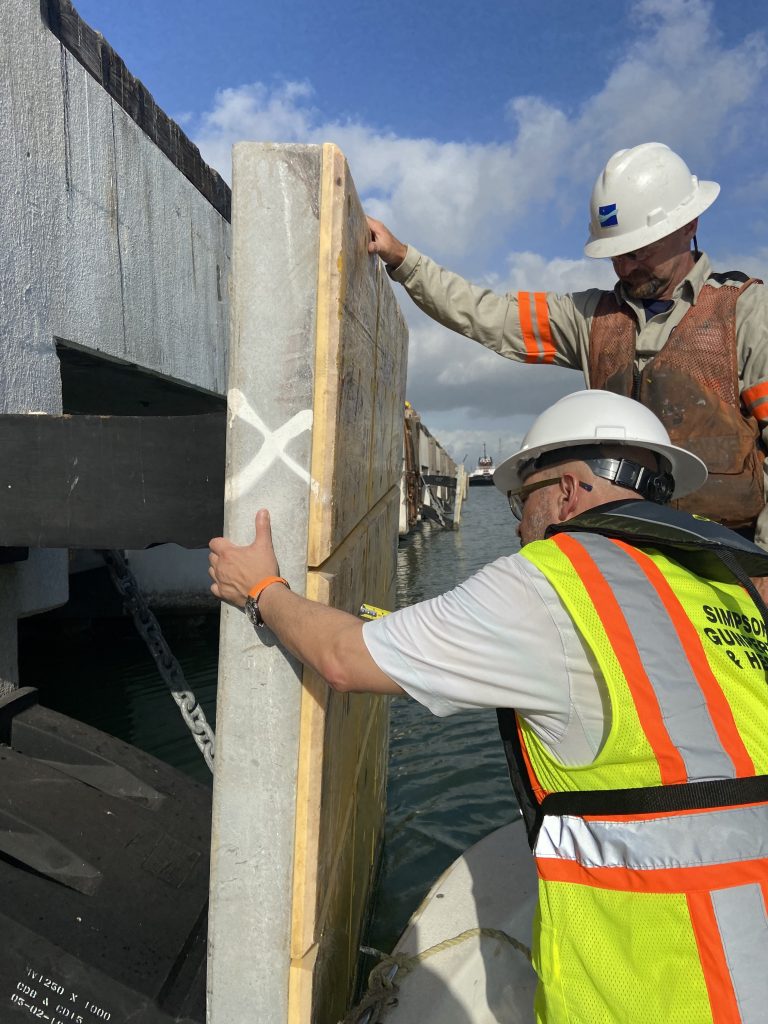Rising to the Challenge: A Look Inside the Marine Infrastructure Industry

Simpson Gumpertz & Heger (SGH) Senior Principal Carlos Ospina discusses building his practice at SGH, discovering his passion for marine engineering, and appreciating the impact of his work.
Tell us about your role at SGH.
 I’m based in Houston, TX, where we have a growing presence in the marine sector, both in the Gulf region and internationally. We’re currently working on and have completed many projects for large marine terminal clients and marine contractors in Latin America. I also interact with my marine structural engineering colleagues in Oakland, CA, where SGH has an established history of this work.
I’m based in Houston, TX, where we have a growing presence in the marine sector, both in the Gulf region and internationally. We’re currently working on and have completed many projects for large marine terminal clients and marine contractors in Latin America. I also interact with my marine structural engineering colleagues in Oakland, CA, where SGH has an established history of this work.
I came to SGH in 2021 with nearly twenty years of marine infrastructure industry experience. Joining the firm has allowed me to grow my practice and mentor younger engineers—it is very rewarding to see someone new to the industry gain experience early in their career. Marine engineering is a highly specialized field, and I am thrilled to be working with talented people who will be able to learn and eventually grow the practice even more.
What types of marine projects do you specialize in?

OPC Berth 6 Container Yard Design, Puerto Cortés, Honduras.
I primarily focus on new design projects for marine infrastructure, working on a diverse range of marine terminals that deal with containerized operations or handle liquid bulk, oil and fuel transfers, solid bulk (such as grain and cement), and even passengers (including cruise guests). Perhaps the most common are container terminals, where containers are handled as part of imports, exports, or transshipment operations. These terminals comprise not just the marine structure—which is typically a large pile-supported wharf, dock, or bulkhead—but also the container yard, a large area with space for stacking thousands of containers in a controlled manner, using very sophisticated equipment, both manned and unmanned. As a matter of fact, we are currently completing the detailed design of a fully automated container yard with large stacking cranes, one of only a few in the nation.
In the context of container terminals, there are many logistics in understanding how all the pieces (including cranes, trucks, and container handling equipment) work together to transfer containers from land to sea and back again. Essentially, there is a marine structure supported on either piles or sheet piles, and specialized equipment operating on a wharf or pier and on the container yard to support the function of the terminal. These can be small, private terminals all the way up to a large conglomerate, whose function can impact entire nations. I am fortunate to have worked on infrastructure design for these terminals all over the world, so I have seen the impact that these ports and terminals have on global trade and countries.
We also help with designing or reviewing others’ designs for marine terminals that handle oil and fuel. For example, we served as the owner’s representative to review the design and provide technical support during construction of the largest marine project development in Argentina today.
We also inspect existing marine terminals in general and provide owners and operators with recommendations for the repair, rehabilitation, or upgrade of their existing facilities, if required.
How do you approach this work?
I find that, in general, most clients tend to be concerned with ensuring adequate operational support for their facilities and less concerned with the structural engineering details and specifics behind all of that. It is my job to provide excellent engineering solutions and thorough guidance from beginning to end, to understand their needs from an operations perspective, and to make sure that the engineering solutions we provide are fully compatible with what they envision in terms of operations. Knowing how their facilities operate allows us to communicate about their issues much more fluently. Our understanding of various marine terminals and how they function are key factors behind the solutions we provide.
Why is this work rewarding?

Carlos at the port of Corpus Christi.
Marine engineers are constantly evolving to respond to growing demands. If you look carefully at graduate structural engineering curricula in the country, most of the design courses revolve around buildings and bridges. Marine structures are unique—they can be considered “cousins” of bridges and a distant relative of buildings. I was educated as a structural engineer. The principles and foundations are there but the direct exposure to this industry over more than twenty years is what has made my professional development possible. In particular, I have had to learn not only about the intricacies of these structures but also about other participating disciplines, including geotechnical and marine construction engineering.
Another challenge we’re seeing is the size and capacity of vessels transporting containers and the cranes used to handle them have increased—they are significantly larger than they used to be. Consequently, driven by progress in the marine industry, consultants have been forced to develop innovative infrastructure solutions to better accommodate these large vessels and cranes. It is important to demonstrate an understanding of the changing landscape and provide solutions for these large terminals.
Interestingly, most of my projects are in regions of high seismicity or areas susceptible to severe hurricanes. When you work on marine terminals that handle the imports and exports of a given country, you also realize that these container shipping terminals influence everyone in a country. If you have, for example, a natural disaster like an earthquake or a flood, or even the collision of a vessel against a pier, dock, or wharf, the supply chain can be paralyzed. When designing these structures, it is important to take a step back and realize the importance of this work, because it has broad impacts on many people.
How do you give back to the profession?
Since the early stages of my career, I’ve been highly motivated by my mentors. This has led to my involvement with several industry committees. I represent the United States on two international committees: the PIANC (World Association for Waterborne Transport Infrastructure) Seismic Design of Ports Committee and the FIB (International Federation for Structural Concrete) Punching Shear Task Group. I also work with several technical committees within ASCE (American Society of Civil Engineers), including their committee on seismic design of piers and wharves (I am co-responsible for the chapter on pile-deck connections). I’m also a member of countless ACI (American Concrete Institute) committees. I take special pride in having become an ACI Fellow very early in my career. I am also the second Colombian and one of the few Canadians to become a full voting member of ACI 318 (Structural Concrete Building Code) committee. We are on the verge of completing a very busy code cycle where we at the 318F Foundations Subcommittee, which I lead, have undertaken a large effort to further improve the ACI 318 code, especially on provisions related to shear design of thick structural concrete members.
What advice do you have for new professionals looking to give back?
When I speak with younger engineers, the first piece of advice I always give is for them to get involved in a technical committee and participate actively. Passive participation does not teach much. While this is a fantastic way to give back by working to advance the field, I also find it to be an opportunity to collaborate, network, and problem-solve with fellow engineers that you are not working with daily.